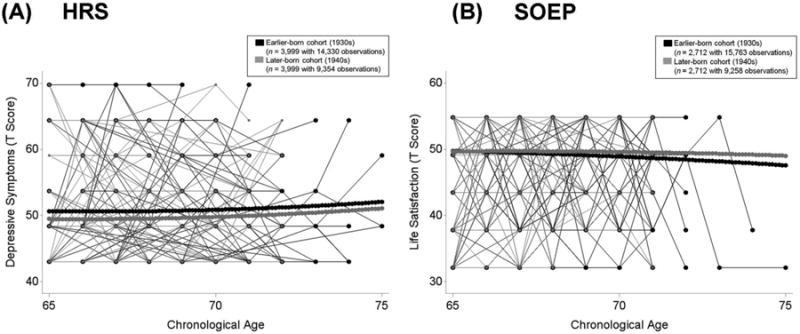Figure 1.

Illustrating differences in life satisfaction between birth-year cohorts in the HRS (Panel A) and in the SOEP (Panel B) from age 65 to age 80 years. Plot includes raw data from 100 earlier-born (1930s, black lines) and 100 later-born (1940s, grey lines) participants. Birth-year cohorts were matched on age at baseline and education and models additionally residualized for differences in gender, education, frequency of observations, and health problems (number of health conditions in the HRS and disability in SOEP). Results revealed secular trends favoring the later-born cohort. Panel A: HRS participants who were born in the 1940s (thick grey lines) showed lower levels of depressive symptoms at age 70 years than those who were born in the 1930s (thick black lines) Cohorts did not differ in rates of age-related change. Panel B: SOEP participants who were born in the 1940s (thick grey lines) showed higher levels of life satisfaction at age 70 years than those who were born in the 1930s (thick black lines) and less steep age-related declines.
